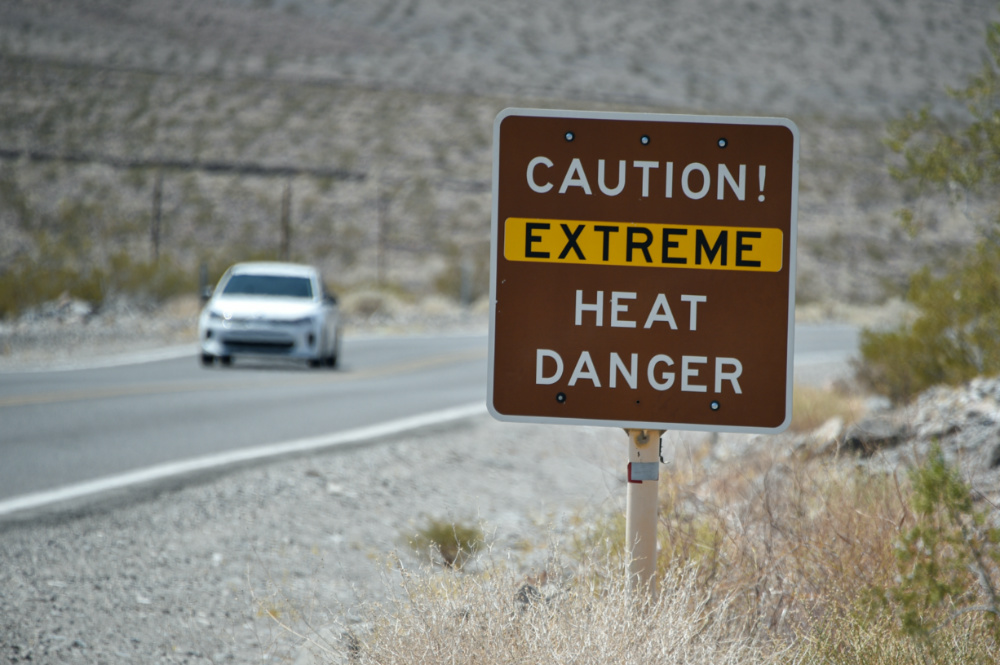
CAREY L BIRON, writing for Thomson Reuters Foundation, reports on how US cities are moving to response to extreme heat…
Washington DC, US
Thomson Reuters Foundation
Over the 15 years that she has lived in her seniors’ apartment building in Maryland, Victoria Price has lost several neighbours to a worsening scourge: heat.
The building in Montgomery County, just outside Washington, was constructed in the 1960s and has seen deferred maintenance, she said.
“We’ve had electrical failures, heating outages, air conditioning failures,” Price, 70, told the Thomson Reuters Foundation. “For a senior citizens’ building to experience this can be tragic.”
In 2015, some of the residents even picketed outside the building to warn about what she described as dangerous indoor conditions.
“Year after year, neighbours would end up being transported to the hospital for heat exhaustion,” Price said, attributing the problem to both unseasonable warmth and faulty air conditioning.
A spokesman for AHC Inc, the building’s current owner, did not respond to a request for comment.

A posted sign warns motorists of extreme heat dangers in Death Valley National Park, in Furnace Creek, California, US, on 17th August. PICTURE: Reuters/David Becker
The coronavirus pandemic has made matters worse for vulnerable city residents, health experts say, as many public and private cooling spaces – from malls to libraries and pools – are closed or limiting entry numbers.
To tackle the problem Montgomery County is now mandating that rental buildings such as Price’s not only have air conditioning but also that they be maintained to cool to a certain level, in residential units as well as common areas.
“We see safe and healthy housing as a human right. We realised decades ago we need to require landlords to require heat, but in a world with climate change, we realised we need to provide air conditioning, as well.”
– Tom Hucker, vice president of the Montgomery County Council.
“We see safe and healthy housing as a human right,” said Tom Hucker, vice president of the Montgomery County Council, who sponsored the law change that passed in February.
“We realised decades ago we need to require landlords to require heat, but in a world with climate change, we realised we need to provide air conditioning, as well,” he said.
Cities like Dallas and Phoenix – both of which have far hotter climates than Maryland – have similar laws, and others are mulling such changes.
As cities prepare for the effects of climate change, Hucker said, that needs to include making sure that all housing is safe for tenants.
“Air conditioning used to be seen as a comfort issue, but these days it’s really a life-or-death issue,” he said.
The US Department of Housing and Urban Development has “strongly encouraged” public housing agencies to purchase and install air conditioning equipment “where appropriate and feasible”, according to a copy of a letter it sent in November.
US landlords have long been required to provide working heat, but air conditioning was seen as a luxury, said Matt Losak, executive director of the Montgomery County Renters Alliance.
“Historically, the inconsistency was that everyone agreed you can’t freeze to death, and there are laws that require heat in apartments, but no laws you can’t cook to death in the summertime,” he said.

The sun rises over a smoldering landscape that was burned by a wildfire dubbed the Cave Fire, burning in the hills of Santa Barbara, California, US, on 26th November, 2019. PICTURE: Reuters/David McNew/File photo
Montgomery County is a huge jurisdiction of more than a million people, and the proportion of renters has risen from 23 per cent to nearly 40 per cent since 2007, said Losak, whose organisation was a key proponent of the new law.
That mirrors a rise in renting across the country – nearly 44 million people, up 21 per cent from 2004, according to a Harvard University study, driven in part by families who can no longer afford to buy their own homes.
Officials elsewhere are taking notice of Montgomery’s moves, and Hucker said he has received queries from neighbouring counties, New York City and elsewhere.
In Philadelphia, the main landlords association has also noted its support for such a measure.
Amid record heat this summer and coronavirus restrictions, some cities are fixing air conditioning units or even distributing new ones, in addition to ramping up public cooling centres.
“Knowing that our summers are just going to get hotter and hotter, we need to make sure residents are able to stay in place and have a comfortable indoor climate.”
– Samira Hanessian, a research and policy analyst for Chicago’s committee on health and environmental protection.
In Chicago, Alderman George Cardenas, chairman of the city’s committee on health and environmental protection, in June introduced a measure that would also require landlords to provide working air conditioning.
Two decades ago, a major heat wave killed more than 700 of the city’s residents, many of whom were seniors and minority communities without access to air conditioning in their homes, said Samira Hanessian, a research and policy analyst for the committee.
“We don’t want to see a repeat situation,” Hanessian said. “Knowing that our summers are just going to get hotter and hotter, we need to make sure residents are able to stay in place and have a comfortable indoor climate.”
Cardenas’s measure has not yet been voted on, in part because of disruptions caused by the coronavirus pandemic, but he made a “moral call” in June for landlords and property managers to provide air conditioning to tenants.
Hanessian said officials plan to work with utility companies to examine what financial offsets could be offered to purchase new air conditioning units if required.
Yet some warn air conditioning mandates could negatively affect renters.
“The cost to retrofit properties without air conditioning systems is extremely high, raising costs for renters and property owners alike,” said Bob Pinnegar, president and CEO of the National Apartment Association.
“Such mandates, while well-intentioned, ultimately hurt housing affordability and saddle renters with added expense and utility bills,” he said in emailed comments.

Death Valley National Park in the US. The US National Weather Service recently recorded a record air temperature of 54.4 degrees Celsius in Death Valley. PICTURE: Pietro De Grandi/Unsplash
For Hanessian and others, the bigger concern is around air conditioning itself, as a major contributor to climate change.
The committee plans to host a hearing on urban “heat island” effects to counter this in Chicago, Hanessian said, such as planting trees, creating green roofs and installing cooler materials on streets and parking lots.
Such “passive” forms of air conditioning are a key but often overlooked part of reacting to rising temperatures, said Brian Dean, who leads the cooling programme at international energy access body Sustainable Energy for All.
While globally there is rising recognition that cooling is a right, he said, it is important to see that right as linked to the need rather than the equipment.
Air conditioning is a major portion of peak energy use, he said. Yet currently there are one billion people globally who lack access to cooling, while another 2.3 billion are “on the verge of buying inefficient air conditioning”.
Instead of mandating working air conditioning, he said, city officials could decide to require better home insulation, encourage the use of external window shutters, or create cooling “corridors” using trees and waterways.
“All of those can make our homes much more comfortable,” Dean said, and most are notably cost-effective – for residential use as well as offices, classrooms and factories.
“Cooling is definitely a new trend,” he added, “but it should be more about the temperatures than the equipment itself.”





